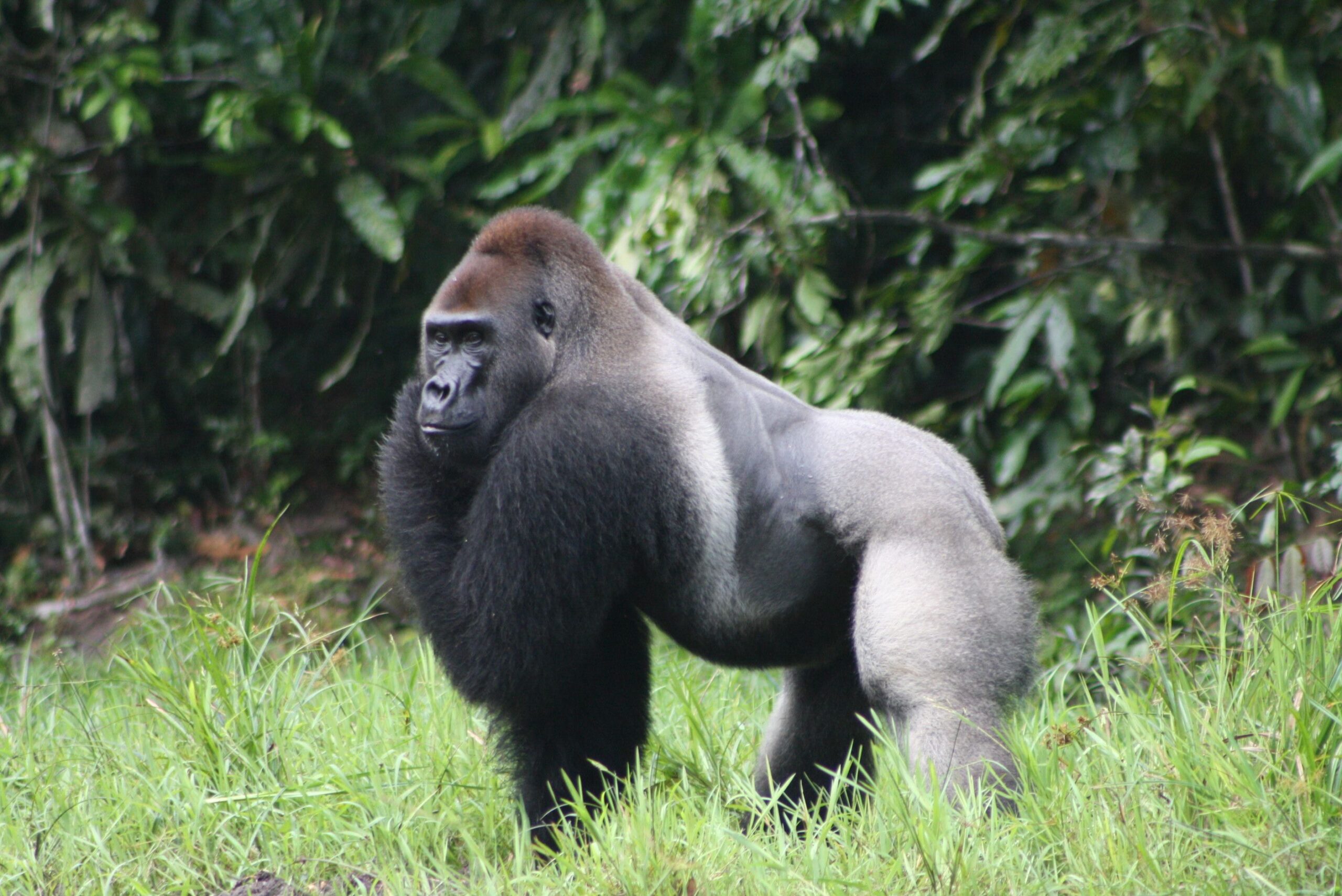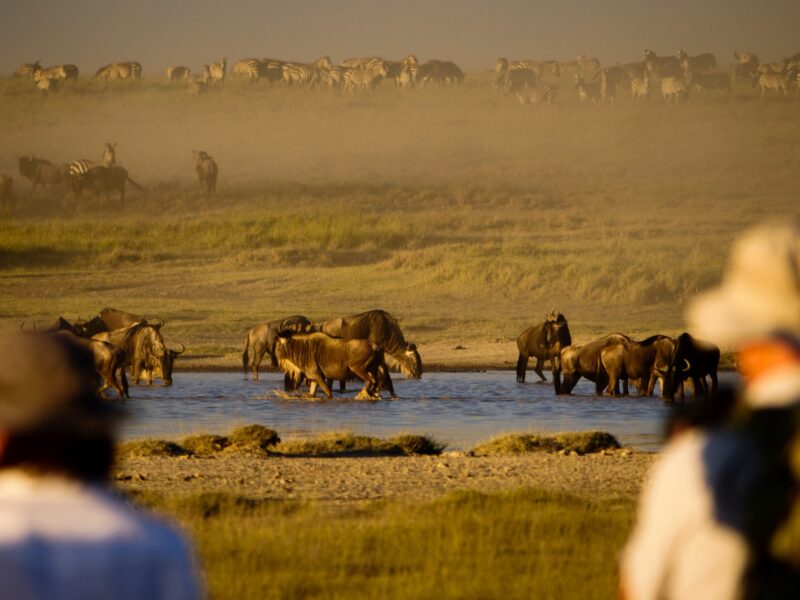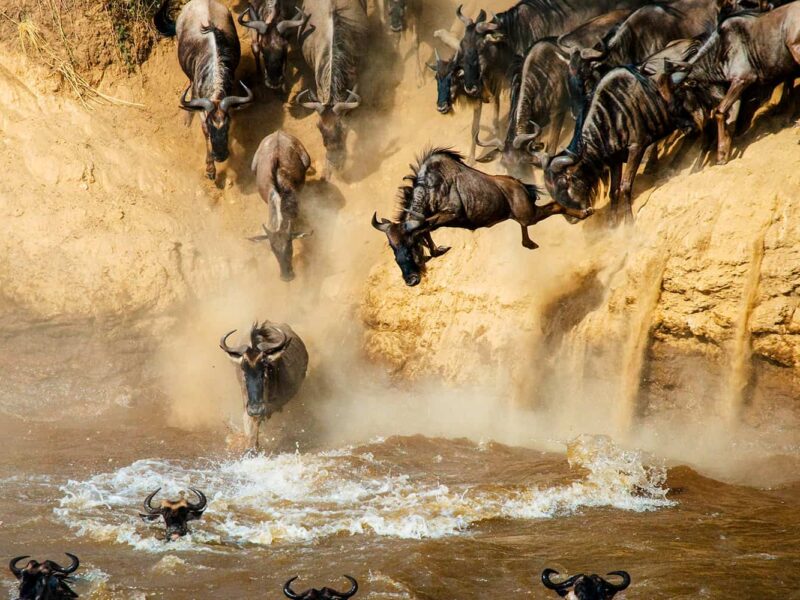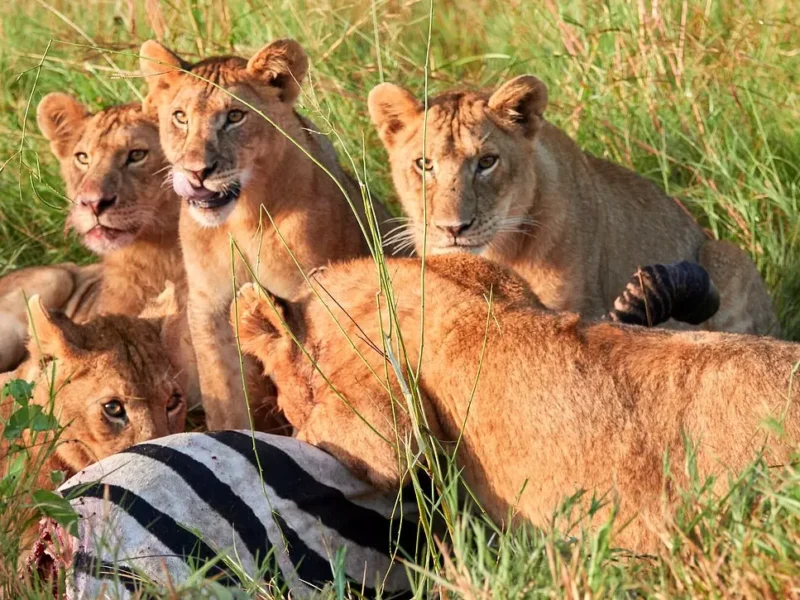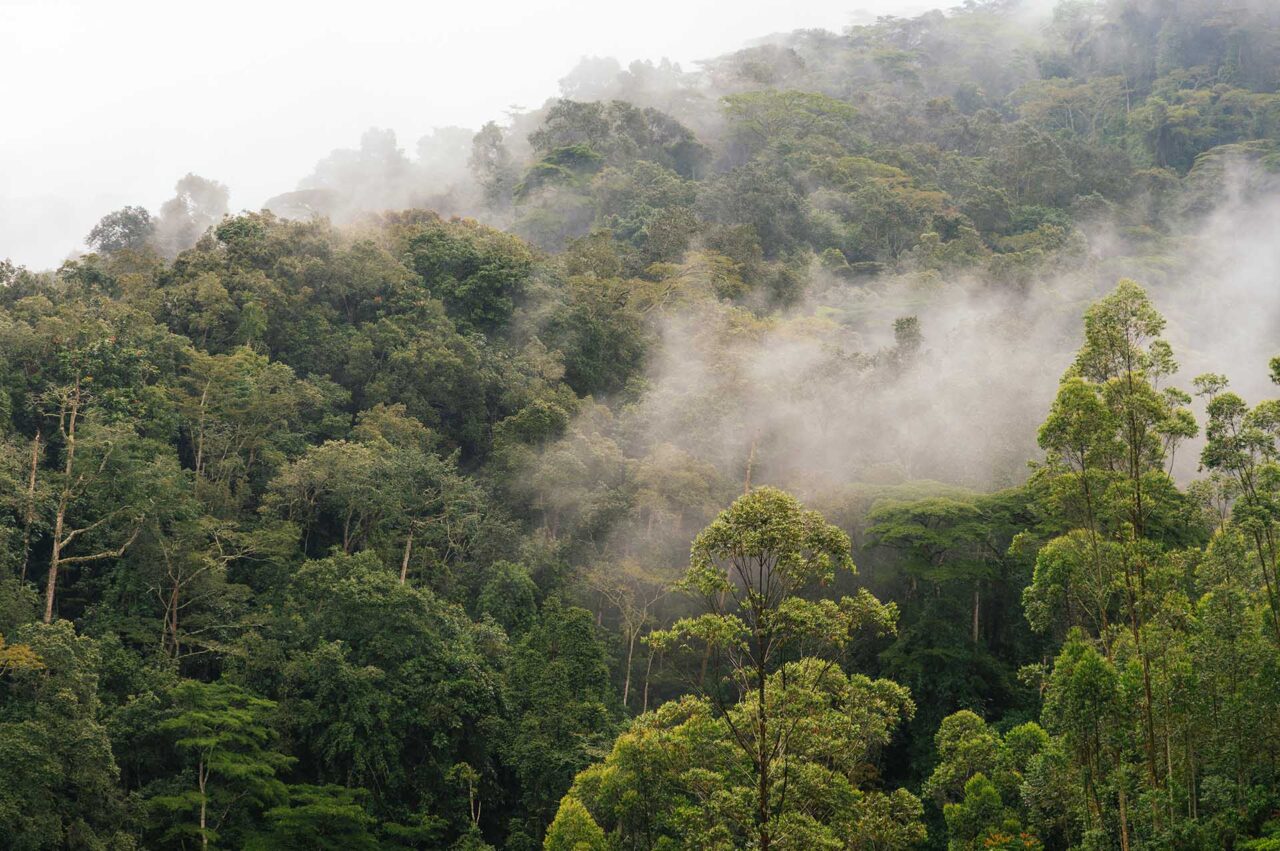
Maramagambo Forest: Where Nature Speaks
April 24, 2025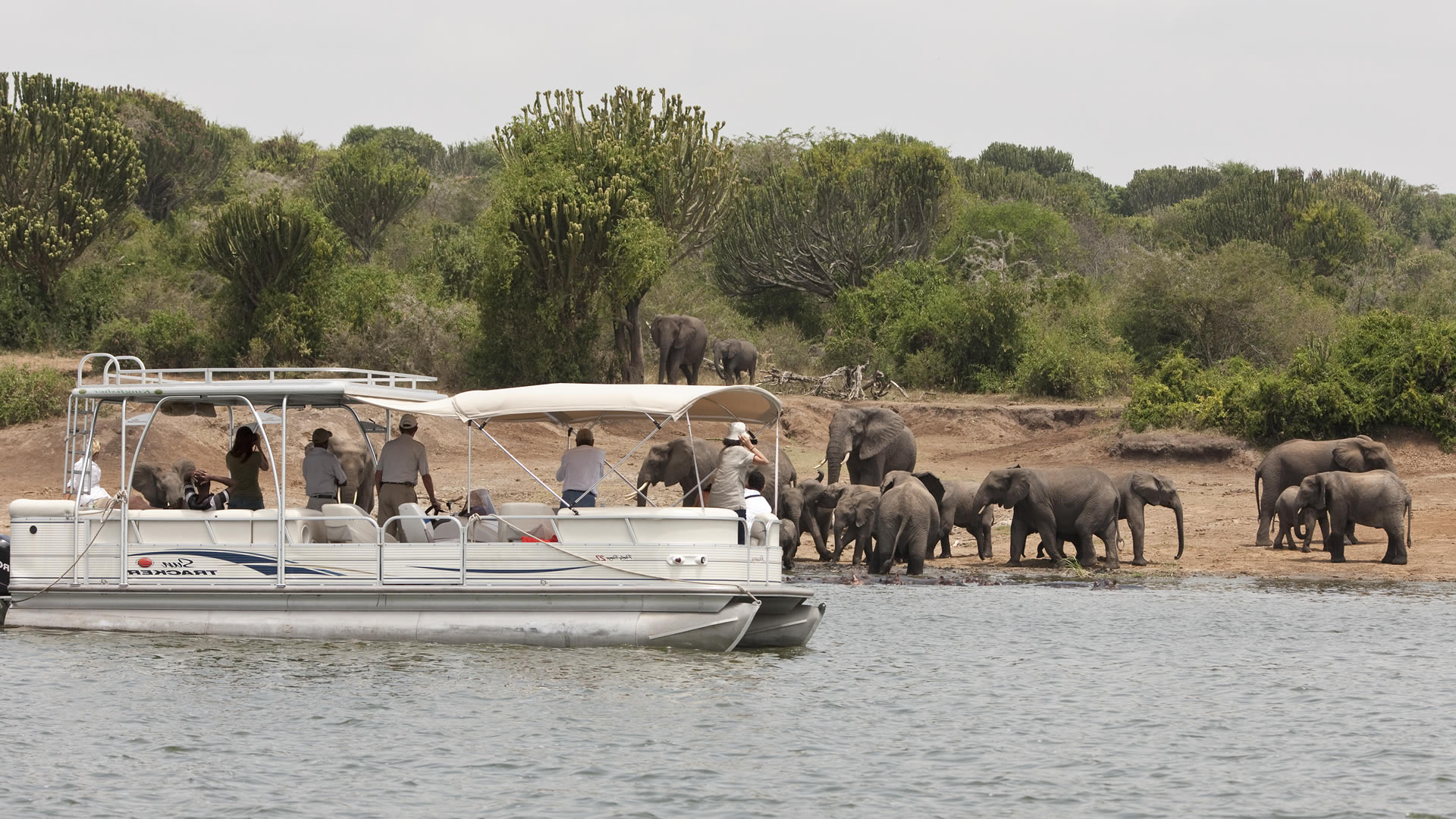
A Safari Through Kazinga Channel
April 25, 2025Silverback Gorillas: Nature’s Gentle Giants
Silverback gorillas are the largest primates on Earth and share about 98% of their DNA with humans, making them our closest relatives after bonobos and chimpanzees. These magnificent animals live in the dense forests of East, Central, and West Africa.
Gorillas are divided into two main species: eastern and western gorillas.
-Western gorillas have two subspecies: the western lowland gorilla and the Cross River gorilla.
-Eastern gorillas include the mountain gorilla and the eastern lowland gorilla (also called Grauer’s gorilla).
The eastern lowland gorilla is the biggest of all, while the Cross River gorilla is the smallest.
Currently, there are:
– Over 300,000 western lowland gorillas
– About 5,000 eastern lowland gorillas
– Just 1,000 mountain gorillas
– Fewer than 400 Cross River gorillas
All gorilla subspecies are listed as critically endangered due to threats like habitat loss, disease, and poaching.
What is a Silverback?
The term “silverback” refers to a mature adult male gorilla, not a separate species. These males develop a distinctive silver-gray patch of hair on their back and shoulders once they’re around 12–13 years old. Before that, they’re known as “blackbacks.”
Silverbacks are much larger than females, often weighing up to 270 kg (nearly 600 lbs.). They lead gorilla families and are responsible for protecting the group, making decisions, and mating with the females.
While some males leave the group upon maturity to start their own families, others stay and support the dominant silverback, especially among mountain gorillas.
Behavior and Temperament
Silverbacks are peaceful and protective, using aggression only when necessary. If a threat appears—whether another male, predator, or human—the silverback will:
-Stand tall and beat his chest
-Throw vegetation while vocalizing loudly
-Perform mock charges
Only if these warnings fail will he attack. A silverback will defend his family—especially the young—at all costs.
Despite their size and strength (they’re over 9 times stronger than an average man), silverbacks are mostly gentle vegetarians, feeding on leaves, fruits, stems, and sometimes insects. Mountain gorillas, in particular, thrive on leafy vegetation and occasionally eat fungi, flowers, or bark.
Where to See Silverback Gorillas
Absolutely! Here’s a deeper look into where you can see eastern lowland gorillas in the wild — each of these locations is tucked into the heart of Democratic Republic of the Congo (DRC) and offers something unique for wildlife lovers and adventurers:
Maiko National Park
-Location: Spans across Nord Kivu, Maniema, and Tshopo provinces in northeastern DRC.
-Vibe: Remote, dense rainforest — one of the least explored parks in Africa.
-Wildlife: Besides eastern lowland gorillas, it’s home to okapis, chimpanzees, and forest elephants.
-What’s special: The park is rarely visited, offering a true off-the-beaten-path experience for hardcore nature enthusiasts.
Kahuzi-Biega National Park
-Location: Near Bukavu, in South Kivu Province, along the western edge of Lake Kivu.
-Vibe: A mix of lowland and mountainous terrain with lush forests.
-Wildlife: A critical stronghold for Grauer’s gorillas (another name for eastern lowland gorillas).
-What’s special: It’s a UNESCO World Heritage Site with relatively easier access compared to other gorilla parks in the DRC.
Tayna Gorilla Reserve
-Location: In North Kivu Province, between Maiko and Kahuzi-Biega National Parks.
-Vibe: Community-led conservation area nestled in the Tayna Forest corridor.
-Wildlife: Vital habitat for gorillas and other endangered primates.
-What’s special: Run by local communities, this reserve is a model for grassroots wildlife conservation.
Itombwe Massif
-Location: A mountainous region in South Kivu, south of Kahuzi-Biega.
-Vibe: Rugged, remote, and teeming with biodiversity.
-Wildlife: Known for endemic birds, chimpanzees, and Grauer’s gorillas.
-What’s special: One of the most biologically rich areas in Africa — but also one of the least studied.
Usala Forest
-Location: In the northern parts of Ituri Province, stretching into parts of Tshopo.
-Vibe: Dense, tropical forest with minimal human impact.
-Wildlife: Little is known, but it is believed to be a critical corridor for gorilla movement.
-What’s special: Because it’s so remote, it’s one of the best places to observe gorillas in untouched habitat.
These regions are not your typical tourist spots — visiting them often involves intense trekking, but the reward is the chance to see gorillas in their natural, undisturbed environment. Perfect for eco-travelers or wildlife photographers looking for something truly wild.
Want help figuring out which one might be best for your visit?
Western lowland gorillas live in:
-Gabon, DRC, Angola, CAR, Cameroon, Equatorial Guinea, and Republic of Congo
Mountain gorillas live in:
Sure! Here’s a detailed look at where to find mountain gorillas, one of the most iconic and endangered primates in the world. These gorillas are primarily found in the Virunga Mountains in central Africa, spanning across three countries: Uganda, Rwanda, and the Democratic Republic of the Congo (DRC).
Bwindi Impenetrable Forest (Uganda)
-Location: Southwestern Uganda, near the border with Rwanda and the DRC.
-Vibe: A lush, ancient forest filled with dense vegetation and steep hills.
-Wildlife: Known as a UNESCO World Heritage Site, Bwindi is home to about half of the world’s mountain gorilla population. Besides gorillas, you can also spot chimpanzees, forest elephants, and over 300 bird species.
-What’s special: Gorilla trekking here is a popular activity, with several habituated gorilla families to visit. The forest’s rugged terrain adds to the adventure, and it’s considered one of the best places for gorilla trekking.
-How to visit: Access is via a permit system — visitors must book in advance. The park is accessible through Kisoro or Kabale.
Mgahinga Gorilla National Park (Uganda)
-Location: In the Virunga Mountain range, on the border with Rwanda and the DRC, in Southwestern Uganda.
-Vibe: A smaller, quieter park compared to Bwindi, Mgahinga offers a more serene gorilla trekking experience with breathtaking views of the Virunga Volcanoes.
-Wildlife: Besides mountain gorillas, the park is home to golden monkeys, buffalo, and forest birds.
-What’s special: It’s known for being the easiest park to access from Rwanda and is part of the Greater Virunga Landscape, making it an excellent spot for trekkers looking for a less crowded experience.
-How to visit: Access is through Kisoro, and permits are required for gorilla trekking.
Volcanoes National Park (Rwanda)
-Location: Northwestern Rwanda, in the Virunga Mountain range.
-Vibe: A stunning park famous for its volcanic scenery, rolling hills, and rich cultural heritage.
-Wildlife: Along with mountain gorillas, you can also find golden monkeys, buffaloes, and over 200 bird species.
-What’s special: Rwanda’s flagship park for gorilla tourism, it offers the most efficient and well-managed gorilla trekking experiences. It’s also accessible from Kigali, making it a popular choice for travelers with limited time.
-How to visit: The park is just a 2–3-hour drive from Kigali, Rwanda’s capital. Like the other parks, it requires a gorilla trekking permit, which should be booked in advance.
Virunga National Park (DRC)
-Location: In Eastern DRC, part of the Virunga Mountain range, this is one of Africa’s oldest and most diverse national parks.
-Vibe: Diverse landscapes, from volcanic peaks to lowland forests, along with a sense of adventure given the park’s rugged terrain and political instability.
-Wildlife: Virunga is home to both mountain gorillas and eastern lowland gorillas, as well as elephants, chimpanzees, and a variety of birds.
-What’s special: Virunga National Park is a UNESCO World Heritage Site, known for its mountain gorilla populations in the northern sector of the park (near the Rwanda and Uganda borders). The park offers the opportunity to track gorillas while also experiencing volcanic treks (e.g., Mount Nyiragongo).
-How to visit: Access is often via Goma (in the DRC), but you need to check security situations before planning a visit as the region has experienced instability.
General Tips for Gorilla Trekking:
-Gorilla Trekking Permits: All of these parks require a permit to trek with the gorillas. It’s advisable to book permits well in advance, as they can sell out, especially during peak seasons.
-Trekking Conditions: Mountain gorillas are typically found in high-altitude forests, so trekking can be challenging. Expect steep hikes, muddy trails, and rainy conditions.
-What to Bring: Comfortable hiking boots, long sleeves, gloves, a rain jacket, and a camera (without flash) for photos.
-Guides: Each trek is led by a local ranger guide who is knowledgeable about the gorillas and the environment.
If you’re planning a visit, these parks are not just about seeing gorillas but also experiencing the breathtaking landscapes of the Virunga Mountains and supporting vital conservation efforts for these magnificent creatures. Let me know if you need more info on specific parks or tips for trekking!
Planning a Visit
To track gorillas, you’ll need a gorilla trekking permit, often arranged through a tour operator. Tours usually include transportation, lodging, and meals. Gorilla trekking is an unforgettable experience, suitable even for seniors with the right preparation.

